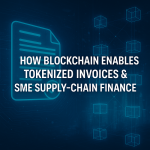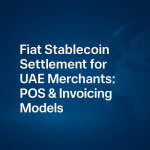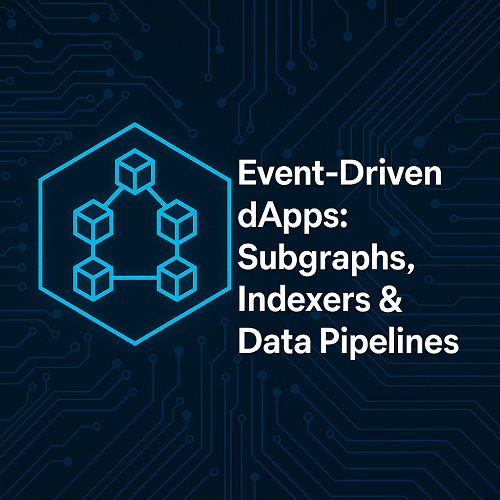Introduction: The Data Challenge in Web3 Applications
As the UAE accelerates blockchain adoption across sectors—finance, real estate, and logistics—developers face a recurring problem: data accessibility.
Every smart contract emits continuous events on-chain, yet fetching, parsing, and aggregating this data in real time is cumbersome and expensive.
Unlike traditional databases, blockchains lack native indexing or relational querying. Each query to an Ethereum or Polygon node requires scanning millions of transactions. To solve this, developers are turning to Web3 data indexing, a growing discipline where tools like The Graph and custom event indexers transform raw blockchain data into structured, queryable formats.
If you’ve been around Web3 for a while, you’ve probably noticed a common problem: too much data, not enough clarity.
Every chain, every protocol, every dashboard is spitting out numbers but they’re often fragmented, delayed, or just plain hard to connect. By the time you’ve… https://t.co/OjhWCNubJR pic.twitter.com/3QX24BwoQK
— GTRIXT IN 1804 (@G_Trixt1804) August 23, 2025
This approach is foundational for Dubai’s Web3 ecosystem, enabling decentralized applications (dApps) that react to real-time blockchain events while maintaining scalability and compliance.
Why Event-Driven Architectures Matter in Web3
In Web3, events are the lifeblood of application logic. When a wallet sends tokens, a user mints an NFT, or a DAO votes on a proposal, smart contracts emit event logs—structured notifications stored on-chain.
Event-driven dApps harness these logs to trigger downstream actions:
- Updating user dashboards when transactions settle.
- Notifying liquidity providers when yield changes.
- Auditing property-token transfers for compliance.
This model delivers low latency, decentralized automation, and better UX compared with manually polling blockchain data. It’s particularly relevant for DeFi protocols, real-estate tokenization projects, and NFT analytics emerging in the UAE.
How The Graph Powers Data Indexing
The Graph Protocol is the backbone of decentralized data indexing. It provides an open standard for ingesting blockchain events, transforming them into entities, and exposing them through a GraphQL API.
Developers define subgraphs, modular blueprints describing what smart contracts to watch and how to store their outputs.
For example, a subgraph may track:
- ERC-721 Transfer events for NFT ownership.
- ERC-20 Approval and Transfer events for token balances.
- Custom property-sale events tied to fractional ownership contracts.
A subgraph comprises three files:
- Manifest (subgraph.yaml) — defines networks, contracts, and event triggers.
- Schema (schema.graphql) — describes entities and relationships.
- Mapping scripts — written in AssemblyScript to process each event.
Once deployed, the indexer continuously syncs new blocks, parsing relevant events and serving them to dApps via a single, low-latency endpoint.
Custom Indexers and Decentralized Data Pipelines
While The Graph handles most public data, some enterprises in the UAE require custom indexers for private or regulated datasets—especially in sectors governed by VARA’s Rulebooks or the Central Bank of the UAE.
Custom indexers replicate The Graph’s functionality in closed environments. They listen for blockchain events through node subscriptions (e.g., eth_subscribe), parse them, and push structured data into secure databases such as PostgreSQL.
To orchestrate this flow, many UAE Web3 firms employ event-streaming tools like Apache Kafka to manage high-volume, real-time data ingestion. Kafka brokers handle parallel topics for NFT mints, token transfers, or escrow updates—scaling from thousands to millions of events per hour.
Typical architecture stack:
| Layer | Technology | Purpose |
| Ingestion | RPC nodes, WebSockets | Capture events from EVM chains |
| Stream Processing | Apache Kafka, Flink | Filter and route events |
| Storage | PostgreSQL, MongoDB | Persist structured data |
| API | GraphQL or REST | Serve indexed queries |
This hybrid design ensures scalability, data integrity, and regulatory control.
Data Indexing in the Context of the UAE
Regulatory Enablement
The UAE’s progressive digital-asset policy is key to Web3 infrastructure development.
Under Dubai’s Blockchain Strategy 2030, all government and land-registry data are slated for blockchain integration.
This vision encourages consistent data standards across decentralized systems—crucial for event-driven dApps that rely on structured logs and metadata.
Adoption in Dubai’s Developer Community
Local engineers are already leveraging The Graph’s hosted service or decentralized network to index blockchain data from Polygon, Arbitrum, and Venom.
Projects range from:
- Tokenized real estate platforms syncing DLD-approved property tokens.
- DeFi dashboards consolidating yield events.
- NFT valuation tools querying mint and transfer histories.
- Carbon-credit dApps using indexed proof of origin, along with halal blockchain traceability frameworks for UAE supply chains, demonstrate how event-driven systems reinforce product authenticity.
Many of these initiatives integrate data pipelines deployed on Chainstack’s UAE node infrastructure, improving latency and data-residency compliance.
Event-Driven dApp Design in Practice
A real-world example for a UAE developer building a property-token dashboard:
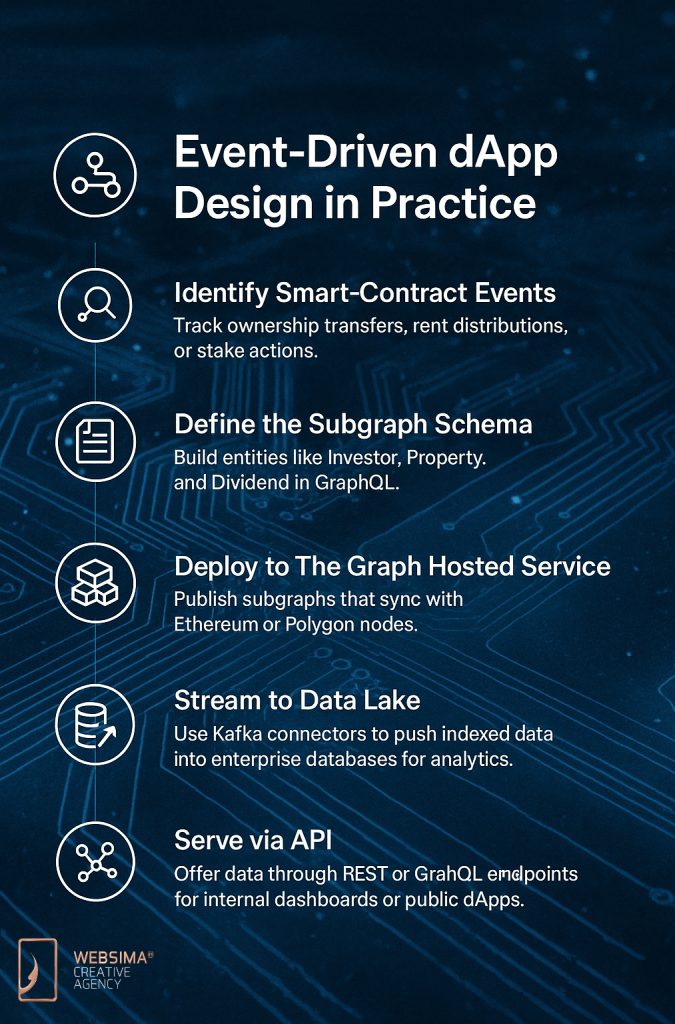
- Identify Smart-Contract Events
Track ownership transfers, rent distributions, or stake actions. - Define the Subgraph Schema
Build entities like Investor, Property, and Dividend in GraphQL. - Deploy to The Graph Hosted Service
Publish subgraphs that sync with Ethereum or Polygon nodes. - Stream to Data Lake
Use Kafka connectors to push indexed data into enterprise databases for analytics. - Serve via API
Offer data through REST or GraphQL endpoints for internal dashboards or public dApps.
This workflow eliminates manual JSON-RPC queries and enables near-instant insights for both developers and regulators.
Optimization and Maintenance
Even with modern indexing frameworks, teams must address:
| Challenge | Impact | Solution |
| Heavy on-chain logs | Slow synchronization | Block-range filters and caching |
| Multi-chain data | Fragmented sources | Aggregated subgraphs or data-lake federation |
| Rate limits | Throttled APIs | Host self-managed Graph nodes |
| Data freshness | Stale analytics | WebSocket streaming or Kafka triggers |
| Compliance | Restricted data | Hybrid on/off-chain storage |
Dubai’s mature cloud and data-center ecosystem supports these optimizations with localized infrastructure from AWS UAE and Etisalat CloudX.
Use Cases in the UAE
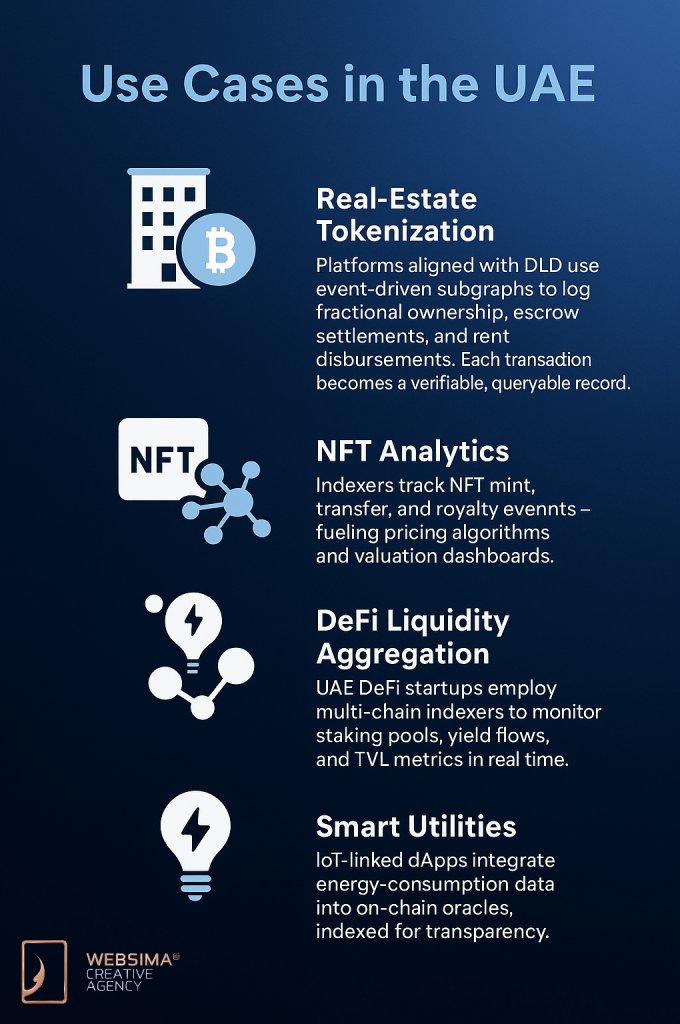
Real-Estate Tokenization
Platforms aligned with DLD use event-driven subgraphs to log fractional ownership, escrow settlements, and rent disbursements. Each transaction becomes a verifiable, queryable record.
NFT Analytics
Indexers track NFT mint, transfer, and royalty events—fueling pricing algorithms and valuation dashboards.
DeFi Liquidity Aggregation
UAE DeFi startups employ multi-chain indexers to monitor staking pools, yield flows, and TVL metrics in real time.
Smart Utilities
IoT-linked dApps integrate energy-consumption data into on-chain oracles, indexed for transparency.
Platforms aligned with DLD use event-driven subgraphs to log fractional ownership, escrow settlements, and rent disbursements — a model similar to on-chain construction escrow automation models in Dubai that bring the same transparency to milestone-based payments.
The Role of Polygon CDK and Modular Scaling
EVM-compatible chains like Polygon, Venom, and Arbitrum Orbit are becoming UAE developers’ favorites because they support modular infrastructure.
With Polygon’s Chain Development Kit (CDK), teams can deploy custom Layer-2 networks that maintain compatibility with The Graph’s indexing protocols.
This approach ensures that event-driven dApps can process large transaction volumes while staying interoperable with Ethereum and local UAE ecosystems.
Looking Ahead: The Future of Web3 Data Indexing in the UAE
By 2030, event-driven blockchain systems will underpin most government and enterprise platforms in the region.
Expect to see:
- Zero-Knowledge query proofs for privacy-preserving analytics.
- AI-assisted indexers that auto-optimize GraphQL queries.
- Unified multi-chain schemas combining Ethereum, Polygon, and Venom data.
- On-premise validators for compliance with VARA data-residency requirements.
The result: transparent, auditable, and real-time decentralized applications that match the UAE’s ambition for regulatory clarity and innovation.
Final Thoughts
Event-driven dApps mark a pivotal shift in blockchain architecture.
By pairing subgraphs, custom indexers, and data pipelines, developers can transform blockchain noise into actionable intelligence—without sacrificing decentralization or compliance.
For UAE developers, web3 data indexing isn’t just a technical advantage; it’s a strategic imperative.
As Dubai continues its Blockchain Strategy 2030, those building with robust data pipelines will set the benchmark for reliability, scalability, and institutional trust in the global Web3 landscape.
Websima Insight
At Websima, we help businesses across the UAE architect and deploy event-driven Web3 applications powered by subgraphs, indexers, and real-time data pipelines.
Our blockchain engineers and legal experts ensure every deployment aligns with VARA and DIFC compliance requirements—without compromising scalability or security.
Learn more or schedule a consultation via our Websima Contact Page.

